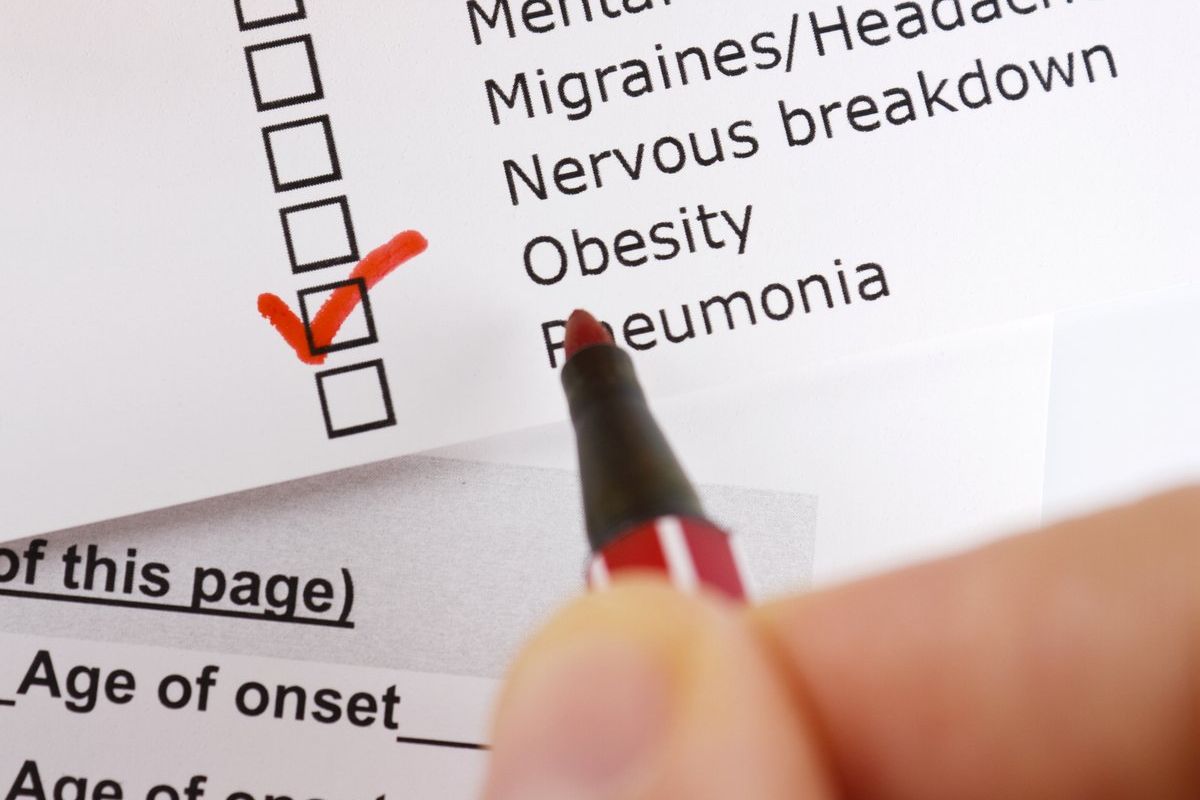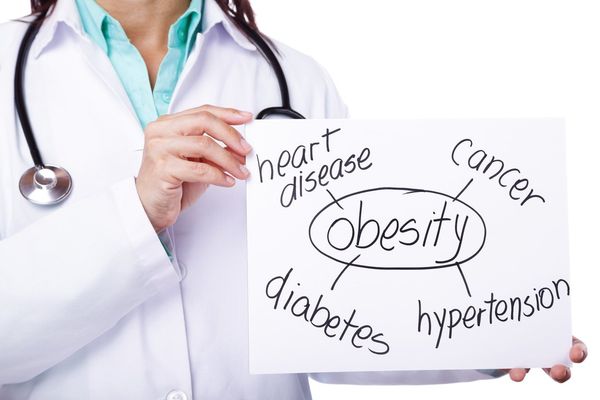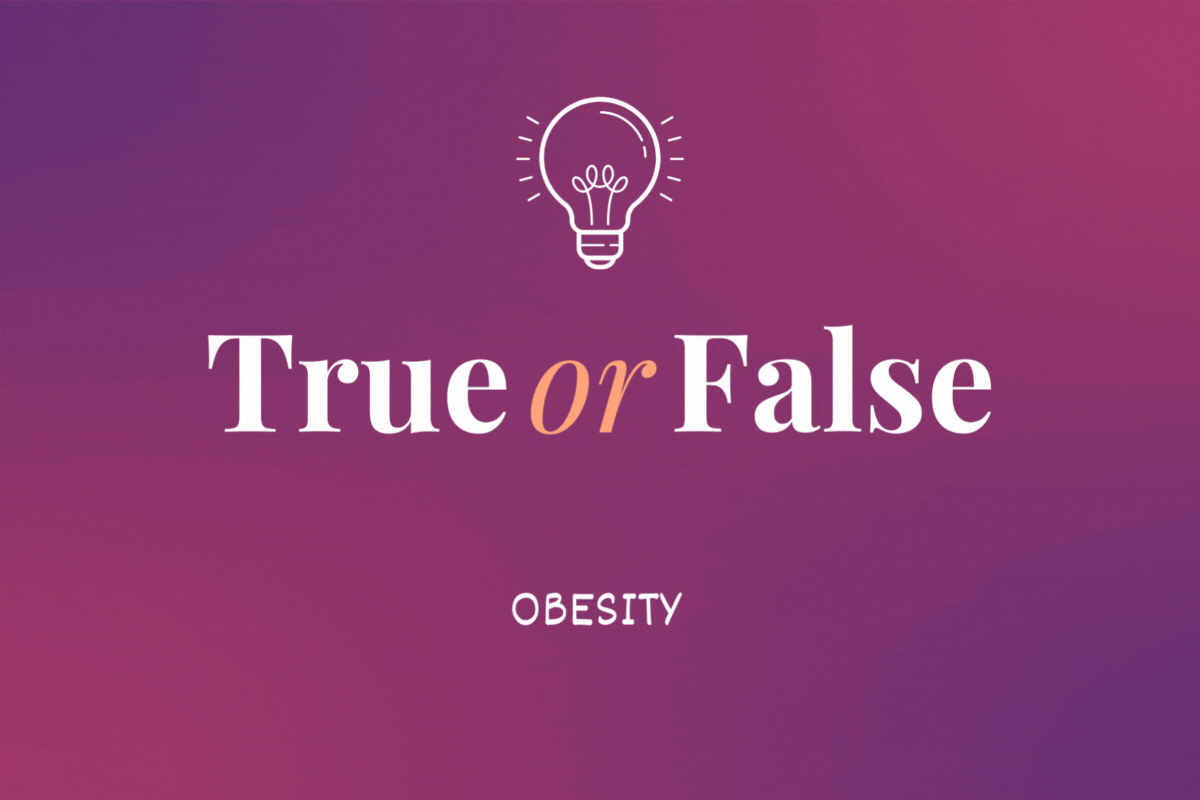Michelle,* a 42-year-old mother of two, has been living with overweight or obesity her entire life. Around third grade, Michelle said she remembers a shift in her parents’ attitude toward her eating habits: They went from bribing or forcing her to eat to questioning whether she really needed seconds.
Her mother, though smaller than Michelle, was never happy with her own body, always dieting and complaining about her weight. When Michelle compared her relatively bigger body to her mother’s, it seemed even more problematic. Michelle went on her first diet and tagged along with her mother to Weight Watchers around age 11.
“I started learning not to trust my body because I was always being told what to do or what not to do,” Michelle said.
Obesity is a common medical condition
An estimated 4 out of 10 women in the United States are living with obesity. And the obesity rate is even higher — nearly 6 out of 10 — among Black women.
Obesity has historically been defined by a body mass index (BMI) of at least 30. However, this simple height-to-weight ratio is not necessarily the best way to predict health complications from obesity. Hormones, genetics, psychology and environmental factors can all contribute to obesity-related health risks. Although obesity was once thought to be a problem of will power, it is now understood that obesity is, in fact, a complex disease.
“Women are especially prone to obesity due to hormonal influences, such as puberty, contraceptive methods, treatments for infertility and menopause,” said Holly F. Lofton, M.D., director of the Medical Weight Management Program at the NYU Grossman School of Medicine and a member of HealthyWomen’s Women’s Health Advisory Committee.
Lofton noted that obesity is associated with more than 200 conditions. Many of these affect women and people assigned female at birth much more than men and people assigned male at birth. These conditions include:
- Heart disease
- Endometrial cancer
- Breast cancer
- Type 2 diabetes
- Polycystic ovary syndrome (PCOS)
- Infertility
- Depression
Obesity has also been linked to fatty liver disease, digestive problems, osteoarthritis, anxiety and certain types of cancers. Obesity can pose risks to pregnant women, women trying to get pregnant and babies born to women with obesity.
Changing treatment guidelines for obesity
Treatment guidelines for obesity typically start with reducing calories and increasing exercise or activity. But obesity treatment needs to be more well-rounded than that, according to Lofton. And studies have shown that people who use anti-obesity medications (AOMs) in combination with lifestyle changes like nutrition and exercise programs tend to lose more weight than those who make lifestyle changes alone.
The American Gastroenterology Association strongly recommends medication in addition to lifestyle changes for adults with a BMI of at least 27 who also have weight-related conditions and for people with a BMI of 30 or more without any other medical conditions.
“We have seen a shift in the types of medications prescribed for weight management,” Lofton said. “We are moving from treating obesity with appetite suppressants to combination therapies and hormonal therapies, which target not only appetite regulation but optimize signals from the brain, intestines and [fatty] tissue as well.”
Current clinical guidelines recommend surgery for people with BMIs of 35 or more who also have other medical conditions or people with a BMI of 40 and up with no other conditions. According to Lofton, these guidelines are being reviewed and may shift to include people with lower BMIs.
“Just as in hypertension, or even cancer treatment, there is no one-size-fits-all model for obesity as a disease,” she said. Given how complicated obesity is, Lofton said more research is needed to find even more treatment options.
Michelle’s experience illustrates the importance of new and varied obesity treatments. She has tried countless diets, which worked — until they didn’t anymore. Despite being active — walking, swimming and doing water aerobics and strength training — Michelle said she typically gains the weight back and more.
Recently, Michelle has not been able to lose any weight, no matter how active she is or how few calories she eats. And her weight has started to affect her health. She is living with joint problems, high cholesterol, high blood pressure, acid reflux, pre-diabetes and fatty liver disease. Because she has a family history of heart disease, Michelle finally started taking medication to treat her obesity.
“I’m more on the cusp of all these terrible things happening, and so I’m trying to get control of it now,” she said.
For Michelle, medication seems to be working. After taking an AOM for the past four months, Michelle estimated that she’s lost 25 pounds, or a little more than a pound a week. She said she hasn’t dieted but just feels less interested in food. Though she has experienced side effects like nausea and fatigue, she’s noticed that her symptoms of irritable bowel syndrome (IBS) have gone away, and she’s less achy. Her blood pressure has improved and she’s waiting for new liver function tests.
Access barriers to obesity treatment
Despite evidence that AOMs and surgery work better than lifestyle changes alone, many women struggle to access comprehensive obesity treatment. Even with a diagnosis of obesity, there can be a wide variety of differences in coverage depending on what type of insurance you have. Many insurance companies require women to meet certain criteria before approving needed treatment. For example, patients often must demonstrate that they have other medical conditions that are a result of their obesity before their insurance company will pay for nutrition counseling. Anti-obesity medications are often not covered because many plans still do not recognize the fact that obesity is a chronic disease. Because of that lack of acknowledgment, they prohibit coverage of “weight-loss” agents instead of recognizing AOMs as necessary medications that have been FDA-approved to treat the disease of obesity. And most women also need their insurance company’s approval before getting surgery.
“As we bring more attention to obesity as a chronic disease, we still have a lot of work to do in the United States with increasing access to care,” Lofton said.
Not everyone who needs medication or surgery is able to get it, according to Lofton. In fact, people with the greatest need for obesity treatment may have the most trouble accessing it.
For women living with obesity, Lofton recommends partnering with their healthcare provider to review treatment options, which she said are constantly improving.
“It is essential to remember that this is a chronic disease,” Lofton said. “It is present even when one’s weight is considered normal or under control.” For women living with obesity, Lofton recommends partnering with their healthcare provider to review treatment options, which she said are constantly improving.
If you would like to talk to someone about how your weight may be impacting your overall health, you can find an obesity care provider through the Obesity Action Coaltion’s Obesity Care Providers search tool.
*Name has been changed for privacy.
This educational resource was created with support from Novo Nordisk, a HealthyWomen Corporate Advisory Council member.
- Changing How We Talk About Obesity — A Conversation with Dr. Sowa ›
- New Anti-Obesity Medications Are More Effective with Fewer Side Effects ›
- Anti-Obesity Medications Are All the Buzz ›
- What You Need to Know About Obesity ›
- Obesity Is a Disease That Can Be Managed in Many Ways ›
- Can Obesity Affect Brain Health? - HealthyWomen ›
- Is the BMI BS? - HealthyWomen ›
- Advancing Employee Wellness for Living with Obesity - HealthyWomen ›







